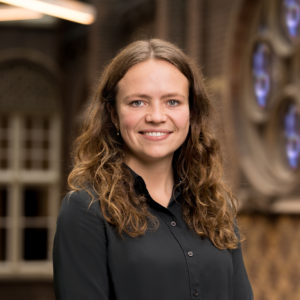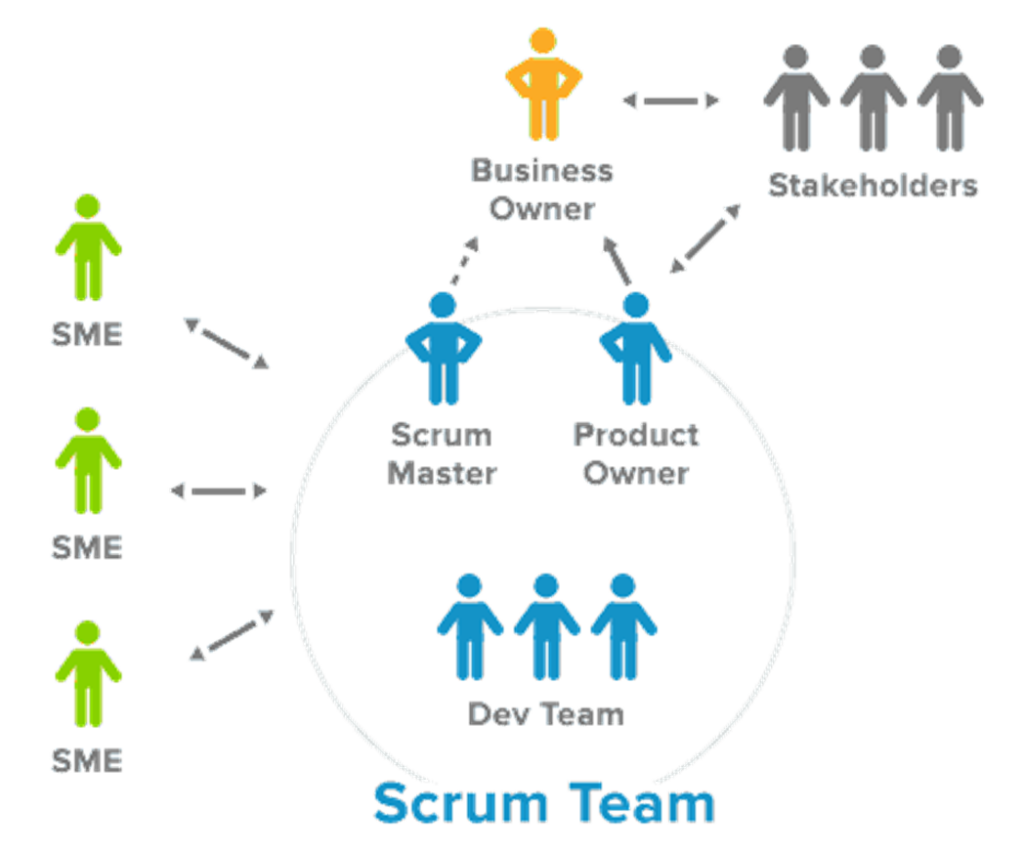
 In this post Naomi Moonen and Claudia Zucca discuss the In Action series offered as part of the Master’s programme Data Science in Business & Entrepreneurship at the Jheronimus Academy of Data Science (JADS). This previous blog post introduced the course.
In this post Naomi Moonen and Claudia Zucca discuss the In Action series offered as part of the Master’s programme Data Science in Business & Entrepreneurship at the Jheronimus Academy of Data Science (JADS). This previous blog post introduced the course.
The courses in this series connect our Master’s students to the job market, by setting up for them collaborations with actual companies working with data. To ensure the successful integration of these practical courses in an academic context, supervision plays a key role in the In Action series.
Data Consultancy in Action is the second module in this series of three. Students roleplay as consultants employed by multinational companies to work for external clients. Clients are actual firms that bring a data science problem that students address with their consulting services.
Each client has its unique problem, but students also all have their own learning objectives that they aim to fulfil. Due to the interdisciplinary nature of this Master’s programme, we teach students with various educational backgrounds and different interests. Whereas some students already have in mind which particular data science career they want to pursue, others still like to get a taste of the various potential career paths that lie ahead of them. We enable these personal learning trajectories by combining supervision on a group and individual level with the teaching of theoretical knowledge that they can apply in their consultancy services.
A lecture series at the beginning of the course teaches a series of theoretical tools that help students to develop their consulting activity in the best way. For instance, students are introduced to the idea that their consulting work should have a purpose. These categories of purposes can be ordered by their level of complexity so that the services provided to companies can be tailored to their requests, skills and openness to external input.
Students are also taught how to employ standard tools that consulting companies use in their everyday practice such as the SCRUM framework and the CRISP-DM model (Cross-industry standard process for data mining). They both belong to the agile framework that is nowadays one of the most common techniques employed to organize group work.
After this, it is up to the students to put what they learned into practice! As consultant, each student is part of a small consultancy team with 4 or 5 other students. They work using the SCRUM framework1in order to simulate the organizational setting of a real consulting team working for an international consulting business.

SCRUM implementation with students as consultants forming a SCRUM team, instructors as business owner, and client companies.
In this course, the course instructors represent the business owners of the consulting firm for which students work. The role of business owners puts us as instructors into the position to supervise the internal dynamics within the student consultancy team as well as the collaboration with the external client company acting as a mediator, if needed. With our supervision we aim to steer the ship to the best direction for both the students and the client by maximizing the learning for students and the produced value for their clients.
To give students space to discuss their ideas and align them with the clients’ and business owners’ expectations, we organise biweekly sessions in which each team presents its ideas and progress. The metrics and artefacts of the SCRUM framework make it easy for the teams to show their progress with dashboards and graphs.

Example of a Trello board used by one student team to organise their work.
Since learning from the actions and ideas of fellow students is very valuable, the various consultancy teams attend each other’s presentations within the same session. Students provide other teams with constructive feedback to address their business problem and share ideas to solve problems that they have in common. Because all teams adopt the SCRUM framework with the same metrics and performance indicators, students can also compare their progress with other teams via visualisations of the tasks they completed and those that still had to be done. Through this knowledge exchange across teams, students learn how other teams deal with the challenges they encounter when working on problems in real-life business settings.

Example of a dashboard showing SCRUM performance indicators to track progress
In addition to the team sessions, students have the opportunity to visit daily office hours to raise questions and disclose problems. Giving them the possibility to talk to instructors in a one-on-one setting about individual matters should maximize the value of the course for each student and make Data Consultancy in Action fun and engaging.
We receive feedback from students that they value the close and frequent interactions with their clients and with us as instructors. In combination with the application of SCRUM and their theoretical knowledge, it contributes to their learning experience of working as a consultant.
The supervision process is important in this, because it creates a safe space to tailor educational needs to each different project and student. Students use the real-life business opportunities they get in the course to explore the angle of the project that most appeals to their natural curiosity. If they are inclined to a specific data science technique that is appropriate for the data they are working with, the supervision provides opportunity to explore these new directions, learn about how they can improve their knowledge and translate intuitions into business value. With the right theoretical toolbox and supervision to support their learning, this gives students the possibility to tailor the projects in the In Action series to the future career they envision.
About the Authors
Naomi Moonen is a PhD Candidate at Jheronimus Academy of Data Science. She holds a Master of Science degree in data science and entrepreneurship. Her research explores digital health platforms that try to disrupt the traditional healthcare sector. She focuses on the unique characteristics of platform companies and the strategic implications that these characteristics have for the companies and their entrepreneurs. She is interested in constructing novel datasets by using web scraping and analyzing these with data science techniques such as natural language processing.
Claudia Zucca is an Assistant Professor in organizational networks at the Jheronimus Academy of Data Science, Tilburg University where she is part of a a dynamic approach to teaching data-driven entrepreneurship. She previously worked as a post-doctoral researcher at the University of Glasgow. Her research focuses on data analytics, especially network analysis, applied to the social science domain, such as forming political opinions, introducing innovation in organizations, and health policy implementation.
